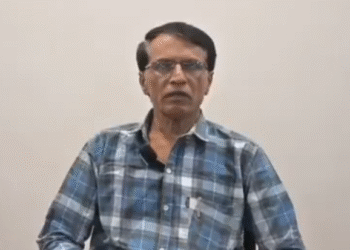The Royal Challengers Bengaluru have made a defining statement ahead of the IPL 2026 mini-auction—continuity is their priority. Fresh off their maiden IPL title, RCB have opted to retain the heart of their championship squad, keeping 17 players while releasing eight, entering the auction with ₹16.4 crore in hand.
This retention approach reflects a clear belief within the management: the formula that delivered success in 2025 still holds strong. Unlike franchises that treated the retention deadline as an opportunity for major restructuring, RCB chose to preserve their winning blueprint.
The Winning Model RCB Wants to Recreate
RCB’s title run in 2025 was anchored by a dominant batting group and a bowling attack built on discipline and new-ball strength.
Batting Strength
-
Virat Kohli led from the front with 657 runs at 54.75 (SR 144.71).
-
Phil Salt blasted 403 runs at a strike rate of 175.98, transforming RCB’s powerplay impact.
-
The lower-order trio of Tim David, Jitesh Sharma, and Romario Shepherd consistently produced match-shifting finishes.
-
Devdutt Padikkal, Rajat Patidar, and emerging talent Jacob Bethell provided stability and flexibility around Kohli and Salt.
Bowling Framework
-
Josh Hazlewood spearheaded the attack with 22 wickets at 17.54.
-
Krunal Pandya and Bhuvneshwar Kumar delivered vital control through the middle and powerplay overs.
-
Youngsters including Yash Dayal, Rasikh Salam, and Suyash Sharma were inconsistent but showed glimpses of long-term value.
RCB’s retentions mirror this dynamic: protect proven match-winners and invest in developing young, scarce-skill assets.
Key Retentions and Their Strategic Value
Batting Core
-
Virat Kohli (RVS 10/10): RCB’s central figure with elite consistency and unmatched influence.
-
Tim David (9/10): A rare power finisher with a strike rate over 185.
-
Phil Salt (8.5/10): A high-impact wicketkeeper-opener in a league lacking reliable Indian keeping options.
-
Rajat Patidar (8/10): A capable spin-playing Indian middle-order batter and championship-winning captain.
-
Devdutt Padikkal (7/10): A left-hander offering balance in a right-heavy top order.
-
Jacob Bethell & Abhinandan Singh: Promising young batting reserves with long-term upside.
All-rounders and Spinners
-
Krunal Pandya (8/10): Left-arm spin, batting depth, and leadership qualities.
-
Romario Shepherd (7.5/10): Explosive lower-order hitter and a useful seam-bowling option.
-
Swapnil Singh & Suyash Sharma: Valuable depth with spin variety and developing potential.
Pace Attack
-
Josh Hazlewood (9.5/10): The team’s most important bowling retention.
-
Bhuvneshwar Kumar (7.5/10): Dependable with the new ball and at the death.
-
Nuwan Thushara (7/10): Slinging pace option offering much-needed variety.
-
Yash Dayal & Rasikh Salam: Development-oriented investments in young Indian fast bowlers.
Overall, RCB’s retention decisions reflect confidence in their title-winning core while trusting emerging players to mature.
Release Decisions and Their Risk Score
-
Liam Livingstone (RRS 6/10): Underperformed with both bat and ball but retains high-ceiling potential.
-
Mayank Agarwal (4/10): A role-based release made easier with Padikkal’s presence.
-
Lungi Ngidi & Blessing Muzarabani (4.5/10): Limited opportunities and overseas pace redundancy.
-
Tim Seifert (2/10): Unlikely to displace Salt or Jitesh Sharma.
-
Swastik Chikara, Manoj Bhandage, Mohit Rathee: Low-risk releases of domestic talents yet to make a breakthrough.
Final Verdict: Loyalty With Calculated Risk
RCB’s retention strategy demonstrates confidence, clarity, and commitment. By ring-fencing their elite batting lineup and preserving their best bowling resources, they aim to replicate the synergy of their championship season. However, the approach comes with narrow margins. With eight remaining slots and ₹16.4 crore, one misstep in the auction—or stagnation among young bowlers—could prove costly.
If their developmental bets on Yash Dayal, Rasikh Salam, and Suyash Sharma pay off, RCB’s measured loyalty will look like long-term brilliance. If not, the champions may face the challenge of defending a title with gaps they chose not to address.





























